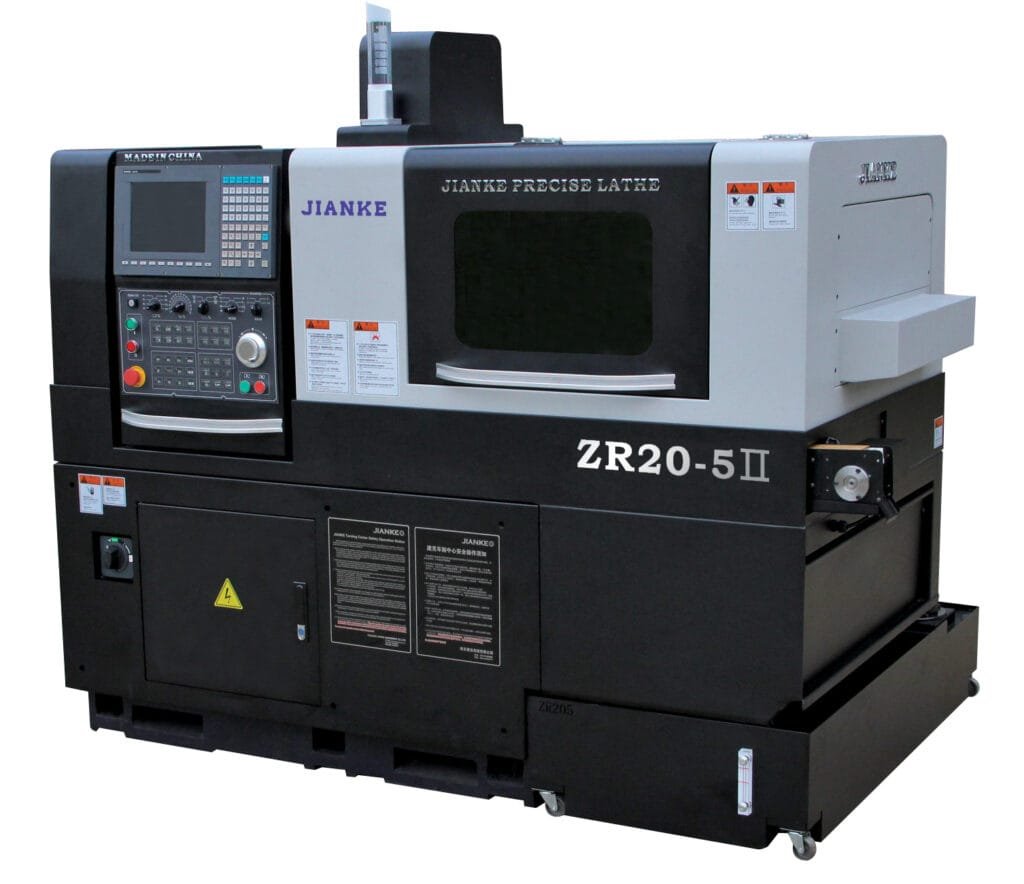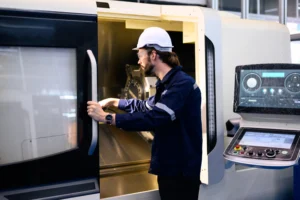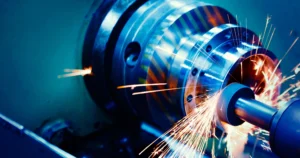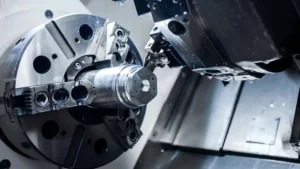Working Principle of CNC Lathes
CNC (Computer Numerical Control) lathes are highly automated machine tools primarily used for machining metal and other materials. Their working principle revolves around securing the workpiece on a spindle that rotates while a fixed cutting tool removes material with precision. The operation involves several key steps:
- Design Phase: Initially, a detailed part design is created using CAD (Computer-Aided Design) software, which includes dimensions and shapes that define the final product.
- Programming: The CAD design is converted into G-code, the programming language that CNC machines understand. This code instructs the lathe on how to move, shape, and process the part accurately.
- Setup: The CNC lathe is set up by selecting and installing appropriate cutting tools and securing the workpiece in place to ensure stability during machining.
- Machining Process: Guided by the G-code, the CNC lathe begins machining. The workpiece rotates at high speed while the cutting tool moves across multiple axes to shape the material precisely.
- Quality Inspection: Throughout the machining process, the CNC lathe monitors cutting conditions in real-time, making adjustments to ensure precision. Final parts are compared against original specifications to guarantee quality.
How CNC Lathes Improves Efficiency
CNC lathes significantly enhance various aspects of efficiency, making them indispensable in manufacturing. Here are some key improvements:
- Automated Operation: CNC lathes can run continuously 24/7, reducing manual intervention and increasing production capacity. This automation allows manufacturers to focus on quality control rather than routine tasks.
- Quick Task Switching: Compared to traditional machines, CNC lathes can switch between different tasks more rapidly, minimizing setup time. This flexibility means manufacturers can respond quickly to changing demands without sacrificing quality.
- Optimized Cutting Parameters: By adjusting cutting speeds, feed rates, and depths based on material and part requirements, manufacturers can maximize machining efficiency. For instance, using advanced algorithms in programming can lead to significant time savings.
- Reduced Material Waste: Through intelligent programming and optimized tool paths, CNC technology effectively utilizes materials, lowering production costs. This not only improves profitability but also promotes sustainability by minimizing waste.
These advantages contribute to the expanding market for CNC metal cutting machine tools, meeting various industries’ demands for efficient and precise production.
How CNC Increases Production Speed
CNC technology enhances production speed through multiple methods that streamline manufacturing processes:
- Automated Tool Changes: CNC equipment can automatically change tools, reducing the time required for manual replacements and shortening cycle times significantly. This feature allows for seamless transitions between different machining operations.
- Optimized Tool Paths: Advanced software generates efficient tool paths that minimize non-cutting movement time, allowing machines to spend more time on actual machining. This optimization leads to faster completion of projects without compromising quality.
- Simultaneous Processing Operations: Some CNC lathes can perform multiple machining tasks simultaneously—such as drilling, milling, and turning—enabling complex parts to be produced in a single setup. This capability dramatically reduces production cycles and increases throughput.
- Reduced Setup Time: With preset programs and quick adjustment mechanisms, CNC lathes can swiftly adapt to different production requirements, enhancing responsiveness. This agility is crucial in today’s fast-paced manufacturing environment where customer demands can change rapidly.
These factors collectively lead to substantial increases in production speed while effectively meeting market demands for quick delivery.
How Different Materials Are Handled in Automotive Manufacturing
Automotive manufacturing involves various materials such as steel, aluminum, plastics, and composites. When dealing with these different materials, CNC technology demonstrates its unique advantages:
- High-Strength Material Machining: For lightweight materials like aluminum alloys, CNC lathes achieve precise cuts that ensure component strength and stability. For example, aerospace-grade aluminum is often used in automotive applications due to its excellent strength-to-weight ratio.
- Composite Material Processing: With rising demands for lightweight and eco-friendly vehicles, composites are increasingly used. CNC technology efficiently processes these complex materials to enhance machining efficiency and quality without compromising structural integrity.
- Versatile Tool Adaptability: Modern CNC lathes can be equipped with various types of tools to accommodate different material processing needs, thus improving flexibility and production efficiency. This adaptability allows manufacturers to tackle a wide range of projects without needing extensive retooling.
Through these methods, automotive manufacturers can effectively respond to market changes while achieving efficient and flexible production processes that ensure product quality meets industry standards.
How CNC Lathe Ensures Precision in Automotive Manufacturing Parts
Ensuring precision in automotive manufacturing parts is crucial for safety and performance. CNC lathes achieve this through several approaches:
- High-Precision Control Systems: CNC lathes utilize computer control systems capable of achieving tolerances of ±0.001 inches—critical for components like engines where even minor deviations can lead to failure.
- Real-Time Monitoring and Feedback Mechanism: During machining operations, machines continuously monitor cutting conditions and make adjustments as needed to maintain precision. This proactive approach helps prevent defects before they occur.
- Multi-Axis Machining Capability: Modern CNC equipment typically features three-axis or five-axis capabilities that can handle complex geometries while improving consistency and repeatability of parts. This versatility allows manufacturers to produce intricate designs that meet stringent specifications.
- Quality Tool Usage: Employing high-quality, sharp tools that are well-maintained ensures optimal cutting performance during each operation, enhancing overall precision. Regular maintenance schedules further ensure that tools remain effective throughout their lifespan.
Through these measures, CNC technology not only improves the precision of automotive components but also boosts overall production efficiency. This provides strong support for the automotive industry’s development while promoting brands like Doosan CNC machine tools in the market to meet the growing demands for precision manufacturing.





